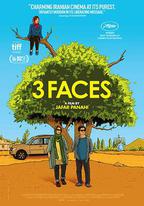誘餌 線上看 88分钟
電影 英國 2019 馬克·詹金 Morgan Val Baker Georgia Ellery Martin Ellis Chloe Endean
如果不能播放,換個線路試試詳細劇情
康沃爾漁村的風景明信片田園詩誤導了人們。雖然過去釣魚是一種養家糊口的方式,但如今富有的倫敦游客紛紛下山,取代了當地人,當地人的生計因此受到威脅。史蒂文和馬丁兄弟的關系也很緊張。馬丁是一個沒有船的漁夫,因為史蒂文開始用它來為一整天的游客提供更賺錢的旅游。他們賣掉了這座家庭別墅,現在看來,最後一場戰鬥是和新主人在海邊的停車位上展開。然而,情況很快就失控了,而不僅僅是因為車輪夾鉗。
Bait是一種黑白,手工制作,16毫米膠片制作的電影。許多關於魚、網、龍蝦、長靴、繩結和漁籃的特寫鏡頭讓人想起了蒙太奇景點的理論。對不同社會階層的描述——可以說是階級關系——也讓人想起了英國電影中的社會現實主義傳統。然而,最重要的是,在影像中不同層次的電影歷史參考文獻之下,當前許多政治關聯正在等待被發現。
The picture-postcard idyll of the Cornwall fishing village is misleading. While fishing used to be a way of supporting oneself, wealthy London tourists have now descended and are displacing the locals, whose livelihood is thus threatened. The relationship between brothers Steven and Martin is also strained. Martin is a fisherman without a boat, since Steven started using it for far more lucrative tours for all the day-trippers. They’ve sold the family cottage and now it seems that the final battle to be fought is that with the new owners over the parking space next to the sea. Yet the situation soon gets out of hand, and not just because of the wheel clamp.
Bait is a black-and-white film shot on hand-processed 16mm. Numerous close-ups of fish, nets, lobsters, wellington boots, knots and catch baskets bring to mind the theory of a montage of attractions. The depiction of the different social strata – one could speak of class relations – is also reminiscent of the tradition of social realism in British cinema. Above all, however, a whole lot of current political relevance is waiting to be discovered beneath the different layers of film historical references contained in the images.

